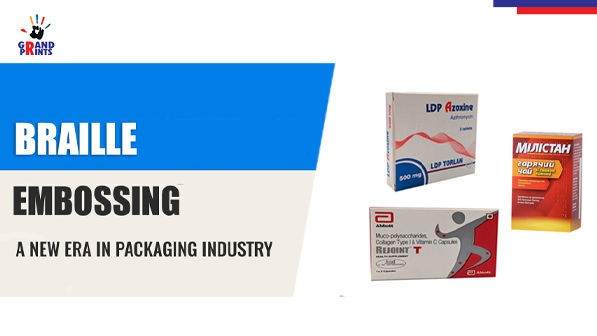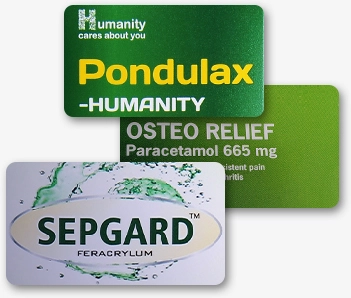What is braille embossing and how it is impacting the Printing and Packaging Industry?

A latest survey from Word Health Organization (WHO) estimates that there is a total of 300 million visually impaired people across the world. People who are visually impaired have a hard time in reading the information and instructions on CPG and pharmaceutical packaging.
Different governments across the world have made the use of Braille on medical packaging mandatory. Not only pharmaceutical, but cosmetics, FMCG, consumer durables and many other industries have started making use of Braille on packaging of products to help the blinds.
The usage of Braille on packaging has evolved significantly over the years and one should agree that it’s the step in the right direction. The printing and packaging companies across the globe have started providing Braille embossing and pressing services to their clientele.
What is Braille Embossing?
A majority of people who are visually impaired or blind need some form of assistive technology to read through the paper or packaging. The assistive technology provides means of producing written information for the blinds.
The process of generating printed material using braille writing system for visually impaired or blinds is called braille embossing. Braille embossing is usually done using braille embosser which is a type of printer. The printer presses the dots down onto the packaging material to help visually impaired read the packaging using their fingers.
The impact of Braille on Packaging for Printing and Packaging Company
The inclusion of Braille on labelling has an effect on labor and costs. On one hand, the printers have to know that not every dot is same for all languages and on other hand, printers have to account for specific dot diameters, offsets and line distances when printing or embossing to ensure that the Braille dots are easily touchable.
Braille embossing on packaging forces the designers to find perfect balance between functionality and appearance. This might increase the cost for printers by 5-25 percent. The printing and packaging company must be prepared for linger set-up times when using Braille.
A wrong spacing of the dots or a misplaced Braille dot could mean something entirely different for a person reading the braille. If a product belongs to pharmaceutical industry, it may cause blunder. The misplaced dot or wring spacing can mean an incorrect product name or dosage information for the person. This can be disastrous.
It is imperative for the organizations to verify word spacing, character spacing, line spacing, number of dots, characters and the lines with horizontal and vertical dot spacing.
Usage of Braille in Packaging Industry
People with visual impairments often have a hard time in reading the information or instructions printed on the packets because they are printed in a small type. Without any access to the information on consumer products, medical packets, cosmetics and travel tickets, the visually impaired people have no safety, independence or freedom of choice. They too have rights for full participation in the society.
The inability to read medical packaging can cause significant problems for the visually impaired people. Misreading the dosage quantity has a potential to cause serious consequences. People with visual problems might face problems with shopping independently. So, there is a dire need for companies to incorporate braille labels and produce the desired information in medical packaging along with packaging of consumer products. The organizations should try to make information on food labels accessible to blinds or visually impaired people. It is must to male the information on prescription drug container labels accessible to blind people.
Today, 150 million+ people use Braille for a number of reasons across the globe. The quality of braille embossing on medical packaging must be superior. Braille embossing on labels help blinds to identify the medicine without sighted assistance. One of the major challenges with braille is that it takes too much space. Therefore, only important information should be given.
Apart from pharmaceutical industry, braille finds its application in travel industry, food packaging and cosmetics. Pharmaceutical companies use braille to communicate name of medicine, their strength and whether product is right for babies, children or adults.
The usage of braille in packaging industry has evolved significantly. There are a number of ways to add braille to packaging. It includes embossing the packaging and depositing dots. Businesses and packaging companies are gearing to address specific packaging and labelling issues of blinds or visually impaired. They must ensure the braille accuracy and consistency to avoid serious circumstances.
Braille is one of the assistive technologies for blind that has not been replaced by any other technology in past 200 years. The use of braille in packaging will ensure the independence of visually impaired or blinds. Its use in packaging industry will continue to increase in coming future.
The Bottom Line
Braille embossing is important in packaging industry as it enables blind and visually impaired to live an independent life. Businesses across the globe has realized the importance of braille embossing for visually impaired and blinds and this is the reason why many of them are choosing braille embossed packaging for their products.


